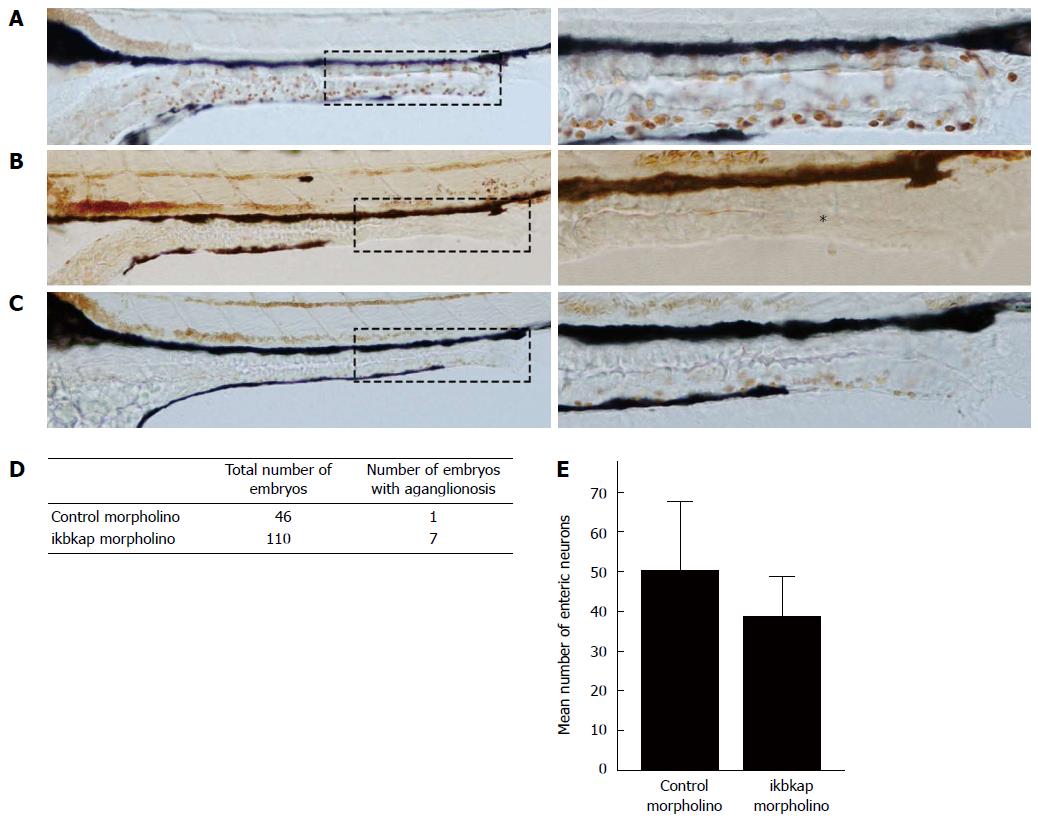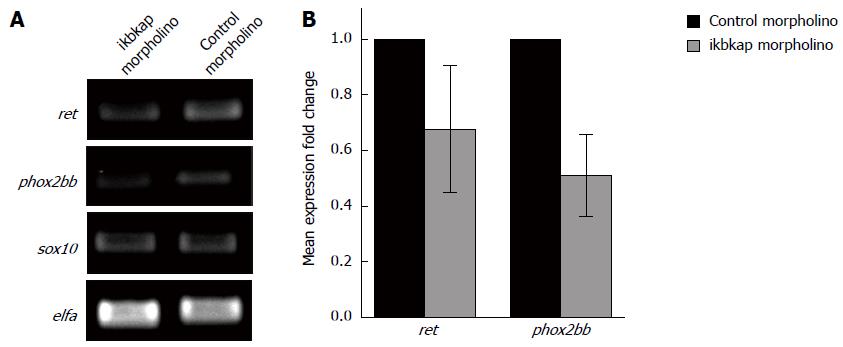Copyright
©The Author(s) 2015.
World J Gastroenterol. Feb 21, 2015; 21(7): 2040-2046
Published online Feb 21, 2015. doi: 10.3748/wjg.v21.i7.2040
Published online Feb 21, 2015. doi: 10.3748/wjg.v21.i7.2040
Figure 1 Ikbkap depletion by morpholino.
A: In 3 dpf control embryo ikbkap protein was detected by antibody staining (reddish-brown, × 400); B: 3 dpf ikbkap morphant embryo. The level of ikbkap was greatly reduced (magnification × 400).
Figure 2 Loss of ikbkap resulted in Hirschsprung disease-like phenotype.
A: Control embryo showed normal enteric nervous system (ENS) development with enteric neurons present along the whole intestine (reddish-brown); B: Morphant displayed complete absence of enteric neuron in distal intestine (asterisk); C: Morphant showed milder phenotype of reduced number of enteric neurons. Magnification × 200 and × 400; D: Summary of aganglionosis observed in morphants (n = 110) and control (n = 46). The difference was statistically significant (P < 0.01) by χ2 test; E: Summary on the number of enteric neurons in morphants (n = 17) and control (n = 17). The difference was statistically significant (38.8 ± 9.9 vs 50.2 ± 17.3, P < 0.05) by Student’s t test.
Figure 3 Loss of ikbkap caused phox2bb down-regulation.
A: Qualitative real-time polymerase chain reaction for the expressions ret, phox2bb and sox10. elfa served as internal control; B: Quantitative-polymerase chain reaction for ret and phox2bb. Down-regulation of phox2bb was statistically significant (0.51 ± 0.15 vs 1.00 ± 0, P < 0.05) by Student’s t test.
-
Citation: Cheng WWC, Tang CSM, Gui HS, So MT, Lui VCH, Tam PKH, Garcia-Barcelo MM. Depletion of the
IKBKAP ortholog in zebrafish leads to hirschsprung disease-like phenotype. World J Gastroenterol 2015; 21(7): 2040-2046 - URL: https://www.wjgnet.com/1007-9327/full/v21/i7/2040.htm
- DOI: https://dx.doi.org/10.3748/wjg.v21.i7.2040











